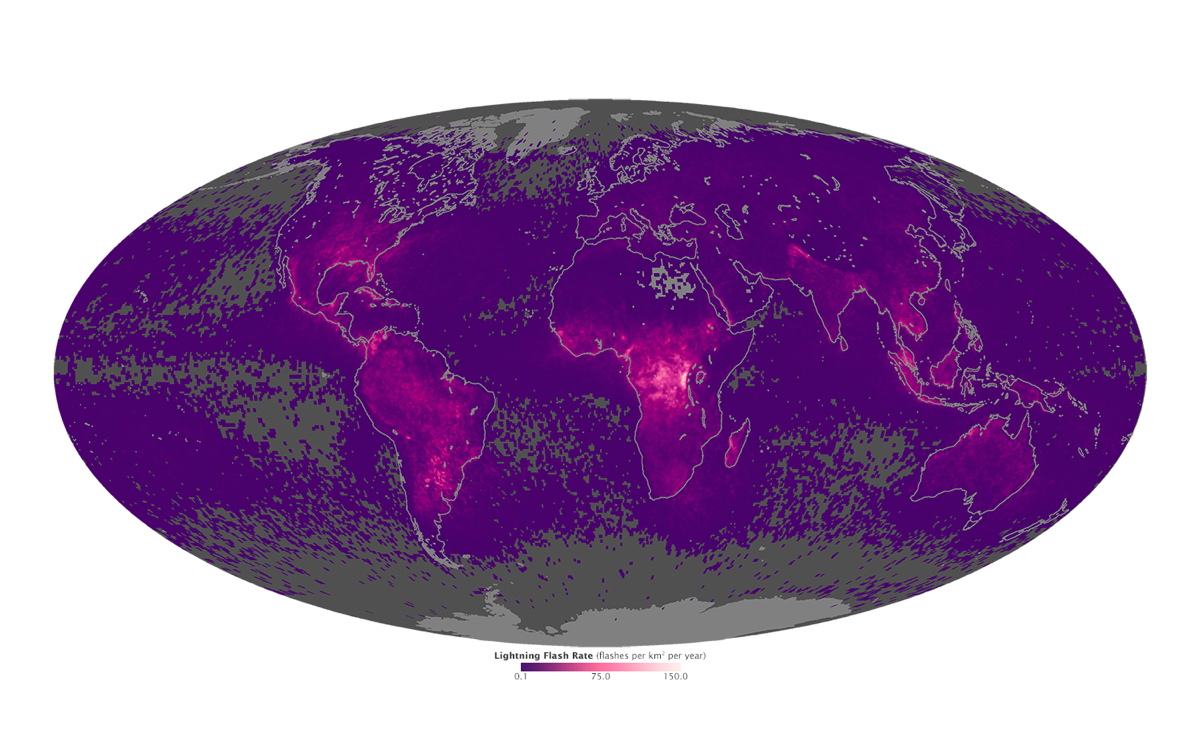NASA World Map Shows Where Lightning Strikes Most

By now, we hope, you've abandoned that old folk myth that lightning never strikes twice. (In fact, a 1997 study found that lighting flashes strike multiple spots simultaneously about a third of the time, and that your chances of being struck are about 45 percent higher than the number of flashes would seem to indicate).
So now that we've gotten that out of the way, here's another burning question: Where does lightning strike most frequently on the planet? As it turns out, those brainy folks at NASA have the answer.
NEWS: Man Struck By Lightning … Twice
Between 1998 and 2013, NASA’s Tropical Rainfall Measuring Mission and OrbView-1/Microlab satellites gathered data on the number and location of lightning flashes worldwide, and what they found is shown on the map above. As it turns out, lightning tends to happen most often in areas closest to the equator, and more often over land than over the oceans. [Photos: Lightning on Earth Seen from Space]
That makes sense, because as NASA's Earth Observatory website explains,solid earth absorbs sunlight and heats up faster than water. That results in stronger convection and greater atmospheric instability, which leads to the production of the sort of storms that produce lightning.
The spots on the planet with the highest amount of lightning turn out to be Lake Maracaibo in northwestern Venezuela, where the combination of heat, humidity and wind from the surrounding Andes mountain range causes spectacular storms, and the far eastern part of the Democratic Republic of Congo.
NEWS: Mushroom Clouds Form Over Idaho Lightning Fires
Get the Space.com Newsletter
Breaking space news, the latest updates on rocket launches, skywatching events and more!
According to Reuters, the Lake Maraciabo area has lightning storms 300 nights each year, and each kilometer of the area is hit by 250 lightning strikes annually.
NASA scientist Daniel Cecil noted on the Earth Observatory website that the new map is far more detailed than previous efforts to chart global lightning. “The longer record allows us to more confidently identify some of these finer details,” he said. “We can examine seasonality, and variability through the day and year-to-year.”
This article was provided by Discovery News.
Join our Space Forums to keep talking space on the latest missions, night sky and more! And if you have a news tip, correction or comment, let us know at: community@space.com.
Patrick is a former contributor to Space.com in the areas of Earth Science, Weather, and the Moon. His freelance work has been seen in Discovery News, GQ, the Los Angeles Times, AARP, National Geographic, PBS.ORG, How Stuff Works, PBS NewsHour and Military History Quarterly. He has also co-authored two books, including "Poplorica: A Popular History of the Fads, Mavericks, Inventions, and Lore That Shaped Modern America."
